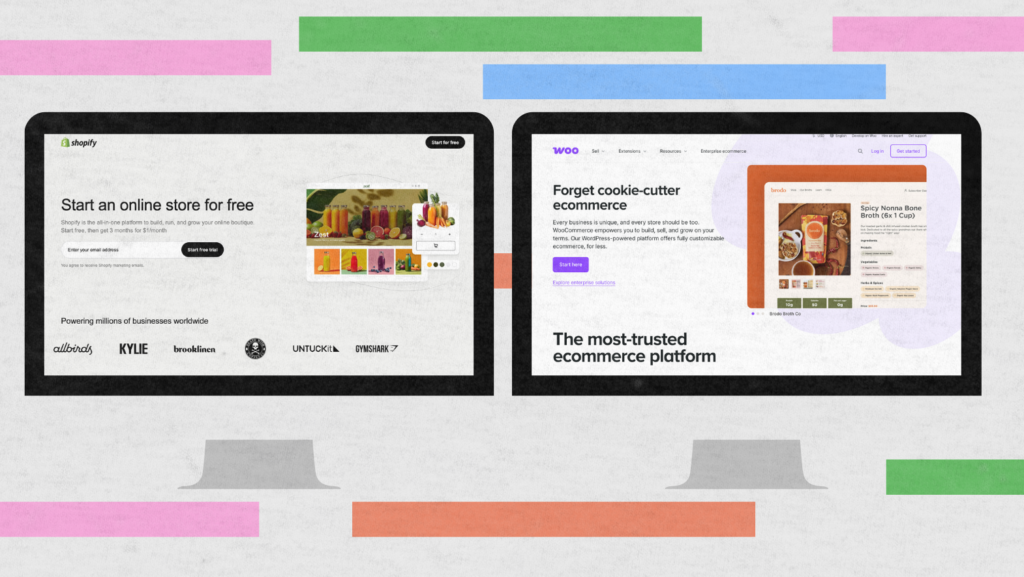Are you an e-commerce or business owner? This comprehensive guide will help you craft effective user personas for UX design. Understanding your target audience can enhance your website’s usability and boost conversion rates.
Throughout this guide, we’ll walk you through creating user personas that resonate with your audience. We’ll explore techniques, data collection methods, and best practices for optimizing qualitative research, user research, and quantitative data to create personas for your UX, design team members, and target users.
Ready to create a user-experience persona and a fictional persona and revolutionize your website? Let’s dive into creating a user-experience persona, fictional representation personas, and fictional personal details, and drive exceptional UX design for your e-commerce or business site.
What Are User Personas?

User personas are essential in an iterative UX design process as they provide valuable insights into your target audience. This aligns with the principles of iterative design and continuous improvement, where ongoing feedback loops refine the UX over time. These qualitative personas, fictional character representations, are created through the iterative design process, which includes thorough user interviews, qualitative research, and analysis. They allow you to empathize with your users and design experiences that resonate with them.
Understanding your user base and target audience is crucial; user personas help you achieve that. They go beyond demographic information, diving into different user segments, real users’ motivations, goals, and pain points, providing a deeper understanding of your target users; more than one can create a fictional user persona.
The HubSpot State of Marketing Report 2021 reveals that 87% of marketers using buyer personas find them effective. This statistic is based on real data from a survey of over 3,400 marketers worldwide, providing valuable insights into marketing trends and best practices.
According to research data used in the report, marketers who utilize buyer statistical personas are more likely to experience the effectiveness of their marketing campaigns. They also observed increased sales and improved customer satisfaction due to statistical buyer personas.
Benefits of Crafting Effective User Personas

Creating well-crafted user personas offers numerous advantages for businesses, specifically in UX design, customer satisfaction, conversion rates, elastic user, and overall business growth.
Crafting effective user personas offers a range of benefits:
- Improved UX Design: Well-crafted personas provide insights into user behaviors, enabling tailored UX designs that meet their expectations.
- Enhanced Customer Satisfaction: Empathizing with users through personas leads to personalized experiences that address their pain points, resulting in higher satisfaction.
- Increased Conversion Rates: Understanding user motivations allows for persuasive calls-to-action and seamless user journeys, driving higher conversion rates.
- Targeted Marketing Strategies: User personas help identify key audience segments, enabling targeted marketing strategies for better results.
- Business Growth and Competitive Advantage: Leveraging personas leads to customer loyalty, positive word-of-mouth, and business growth, giving a competitive edge.
Effective user personas yield significant benefits for UX design, customer satisfaction, conversions, and business growth, setting your business apart.
Steps to Create User Personas

Creating effective user personas involves a series of crucial steps that help you accurately represent the realistic character of the UX persona, a fictional user persona used in your primary persona, or user persona template, to your target audience.
Following these steps, you can gather relevant data on the primary persona or user persona, compile comprehensive user persona profiles, create a persona, and ensure its validity through validation and refinement.
- Identifying Target Audience
Gaining a deep understanding of the characteristics and preferences of the individuals most likely to interact with your product or service. You can employ various methods such as surveys, interviews, and data analysis to gather valuable insights into your audience’s demographics, interests, and specific needs. - Collecting Relevant Data
Primary research involves obtaining information directly from your target audience through feedback, interviews, or focus groups. Secondary research entails analyzing data such as analytics, market reports, or industry studies. Combining these research approaches provides a comprehensive understanding of your target audience for creating detailed user personas. - Creating User Persona Profiles
Compile the collected data into comprehensive user persona profiles. These profiles should include key elements such as demographics, behaviors, motivations, and pain points of your target audience. Use the data to create fictional personas representing different segments within your target audience. Provide examples and templates to guide the process, ensuring that each persona reflects the characteristics and needs of your users. - Validating and Refining User Personas
Validate and refine your user personas to ensure their accuracy and effectiveness. This involves testing and gathering feedback from your target audience. Conduct user testing sessions, surveys, or interviews to validate whether your user personas accurately represent your users’ real-life behaviors and preferences. For deeper insight, consider applying usability testing methods that go beyond surface-level interactions and test real-time friction points. Incorporate the feedback received into refining the personas, making them even more representative and valuable for your UX design decisions.
Incorporating structured user feedback analysis helps ensure your personas reflect real-world behaviors and expectations.
Implementing User Personas in UX Design

Incorporating user personas in UX design is vital for creating user-centered experiences. User personas inform the design process and decisions, shape information architecture, mine user research findings, and guide content strategy to resonate with the needs and target audience.
User personas act as a compass for conducting user research, helping designers understand and create personas representing each user’s needs, goals, behavior patterns, and motivations. By referring to personas, designers can conduct user research and make informed decisions on visual design elements, interaction patterns, and navigation structures.
User personas are crucial in organizing and structuring content, ensuring it aligns with the target and user needs and preferences. They help identify relevant information for each user group or segment and define a clear content hierarchy. Pairing personas with user journey mapping can further illuminate how different users engage with your digital touchpoints.
User personas also inform content strategy by providing insights into the user persona description, target user, behavior, interests, pain points, behavior patterns, and communication preferences in a particular context. This enables the creation of persuasive copy and tailored messaging for real users. For instance, optimizing contact forms based on persona behavior can significantly improve lead generation and reduce abandonment.
For example, HubSpot effectively utilizes user personas in its product development and marketing strategies. They create detailed profiles of their target customers by conducting interviews and analyzing data, including demographics, goals, challenges, and pain points.
HubSpot’s marketing campaigns also leverage user personas to create targeted materials and measure campaign success. As a result of its persona-driven approach, HubSpot has experienced notable sales growth and achieved customer satisfaction by aligning its offerings with customer needs.
Implementing user personas ensures that UX design, information architecture, the design process, and content strategy align with how the user will create a user persona, a fictional or more than one persona representing the target audience’s needs, resulting in successful user-centric experiences.
Common Mistakes to Avoid

To ensure the effectiveness of qualitative personas in UX design, it is crucial to avoid common mistakes that can compromise their impact. By avoiding these pitfalls, most designers can ensure accurate and relevant user personas that enhance their design decisions.
- Assumptions: Don’t rely on assumptions. Conduct thorough research through surveys, interviews, and analytics to gather real insights about your target audience. Avoid making assumptions about their preferences and behaviors without proper research.
- Lack of Diversity: Capture the diversity within your target audience. Ensure your personas represent different demographics and user segments. Embrace diverse perspectives to gain valuable insights for your design decisions.
- Overgeneralization: Avoid overgeneralizing personas. Each persona should reflect a distinct user segment’s specific characteristics and needs. Create detailed personas that capture unique traits and preferences.
- Neglecting Updates: User personas should be dynamic. Regularly update and refine them as your target audience evolves. Gather feedback, conduct user testing, and analyze data to keep your personas accurate and relevant.
- Disregarding User Validation: Validate your personas through user feedback and testing. Incorporate user input and engage in usability testing to ensure your personas align with user behaviors and motivations.
To overcome these challenges:
- Invest in thorough research for accurate data.
- Embrace diversity to capture different user segments.
- Be specific and avoid overgeneralization.
- Regularly update and refine personas.
- Validate personas through user feedback and testing.
Frequently Asked Questions
How many user personas should I create for my website or product?
Should my user personas evolve over time?
Can small businesses benefit from user personas, or is it only for large companies?
How detailed should a user persona be?
What’s the difference between a buyer persona and a user persona?
Conclusion
Crafting effective user personas is crucial for successful UX design. By understanding target users and audiences, businesses can enhance customer satisfaction and drive growth. Well-crafted user personas provide valuable insights into customer needs, enabling tailored experiences and relevant content.
To ensure the effectiveness of user research, avoid mistakes like assumptions, a lack of diversity, and neglecting user validation. Apply the knowledge gained from user research to your e-commerce or business website by identifying your target audience, collecting relevant data, creating comprehensive personas, and prioritizing user-centered design.
For expert guidance on the design process and creating user personas for five user interviews each, consider consulting LeadAdvisors. Implementing effective user and start-creating and creating personas for user interviews unlocks the full potential of your website, allowing you to deliver exceptional experiences and stand out from the competition.












